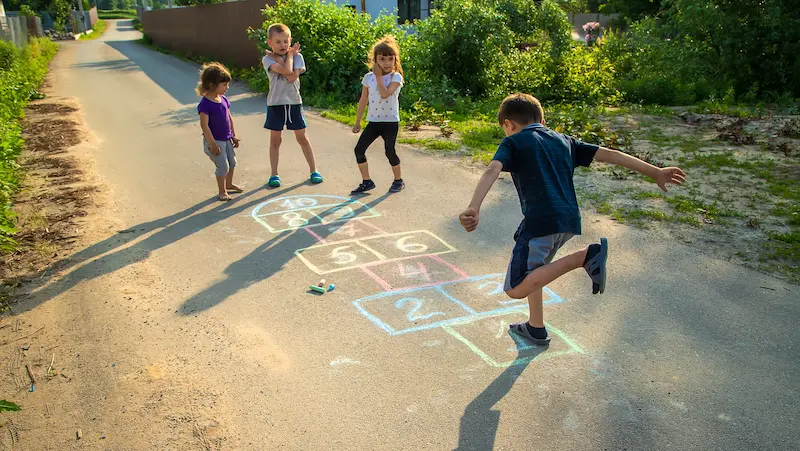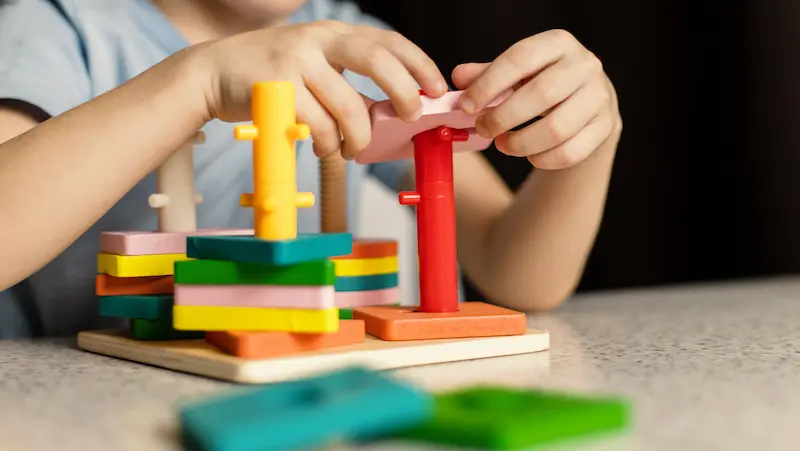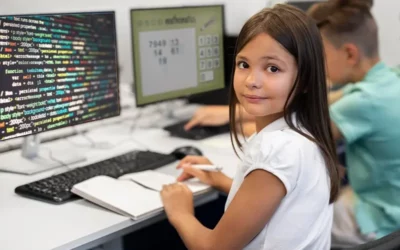As parents, we all want the best for our children, and we recognize that their early years are crucial for their overall development. While structured learning and academics are essential, it is equally important to understand the significance of play in their growth. Play is not just a way for children to pass the time; it is a fundamental aspect of their development that lays the foundation for future learning and success.
Table of contents
- Types of Children’s Games
- Classic Children’s Games
- Educational Games for Children
- Team-Building Games and Group Activities
- Role-Playing and Pretend Play
- Creative Arts and Craft Games
- Physical and Active Games
- Holiday and Seasonal Games
- Screen-Free Games for Quality Time
- Organizing Children’s Game Events
- Adapting Games for Different Age Groups
- Benefits of Children’s Games in Education
- Safety Considerations for Children’s Games
- Conclusion
- Frequently Asked Questions(FAQ’s)
Types of Children’s Games
Indoor Games: Engaging Fun for Rainy Days
Indoor games come to the rescue when the weather is less than ideal for outdoor play. These games can range from building forts and playing pretend to engaging in various board games and puzzles. Indoor play encourages creativity and resourcefulness as children use their imagination to create fun experiences even within the confines of their homes. It also allows parents to bond with their kids during family game nights, providing an opportunity for quality time and shared laughter.
Here are some example of Indore Game :
- Building Forts: Use blankets, pillows, and furniture to create cozy forts or secret hideaways where children can play and use their imaginations.
- Pretend Play: Encourage children to dress up and act out different roles, such as playing house, doctor, chef, or explorer, sparking creativity and storytelling.
- Board Games: Gather the family for classic board games like Monopoly, Scrabble, or Clue, fostering friendly competition and strategic thinking.
- Puzzles: Assemble jigsaw puzzles together, offering a collaborative challenge that promotes problem-solving and patience.
- Indoor Treasure Hunt: Hide small objects or treats around the house, and create clues for children to follow in a treasure hunt adventure.
- Charades: Act out words or phrases without speaking, challenging children to interpret gestures and expressions.
- Indoor Mini Golf: Create a mini golf course using household items and practice putting skills.
- Freeze Dance: Play music and have children dance, but they must freeze when the music stops.
- Indoor Bowling: Set up empty plastic bottles as pins, and use a soft ball to knock them down.
- Simon Says: Give instructions, and children must follow only the ones preceded by “Simon says.”
Outdoor Games: Embracing the Joys of Nature

Outdoor play is equally important as it allows children to connect with nature, get fresh air, and engage in physical activities. Outdoor games like tag, hide-and-seek, and obstacle courses promote physical fitness, improve motor skills, and enhance coordination. Moreover, being outdoors can spark curiosity and a sense of wonder, as children explore their surroundings and discover the wonders of the natural world.
- Tag: Classic tag games, such as regular tag, freeze tag, or flashlight tag, encourage running and laughter while enjoying the fresh air.
- Hide-and-Seek: Seek out hiding spots amidst trees, bushes, and outdoor surroundings, adding excitement to the traditional game.
- Nature Scavenger Hunt: Create a list of natural items like leaves, rocks, flowers, and wildlife to find in the outdoor environment.
- Obstacle Course: Set up an outdoor obstacle course using cones, hula hoops, ropes, and other items to challenge agility and coordination.
- Sack Race: Hop along with friends in a good old-fashioned sack race, which brings fun and silliness to any outdoor gathering.
Board Games: Building Strategy and Critical Thinking
Board games are a classic form of play that has stood the test of time. From simple games like Snakes and Ladders to more complex ones like Chess, board games provide opportunities for strategic thinking, problem-solving, and decision-making. Playing board games with family and friends fosters social interaction and healthy competition while teaching children to be gracious winners and gracious losers.
Here are some example’s of boardgames :
- Chess: A classic two-player game that requires strategic planning, anticipating opponents’ moves, and controlling the board to checkmate the opponent’s king.
- Settlers of Catan: A popular board game that involves resource management, negotiation, and tactical placement to build settlements and cities.
- Ticket to Ride: Players collect train cards and strategically build routes on a map to connect cities and complete their train routes, earning points along the way.
- Pandemic: A cooperative board game where players work together as a team of specialists to prevent the outbreak of deadly diseases worldwide, requiring careful planning and coordination.
- Codenames: A word-based deduction game where players try to identify their team’s secret agents using one-word clues, promoting critical thinking and logical reasoning.
Card Games: Exploring Card-Based Adventures
Card games offer a wide variety of options, ranging from traditional games like Go Fish to more strategic ones like Poker. Playing card games improves memory, concentration, and mathematical skills. Card games can be enjoyed individually or in groups, making them a versatile choice for playtime.
Here are some example’s of Card Games
- Poker: A popular gambling game with various variations, where players bet on the strength of their hands and try to outwit their opponents through strategic betting and bluffing.
- Uno: A fast-paced and family-friendly game where players try to get rid of their cards by matching colors or numbers, using action cards to add twists to the gameplay.
- Solitaire: A classic single-player card game that requires arranging cards in a specific order or sequence, offering a relaxing and challenging experience.
- Go Fish: A simple and enjoyable game for children, where players ask each other for specific cards to complete sets and try to collect the most sets by the end of the game.
- Rummy: A group of matching-card games where players try to form sets or runs of cards in their hands, aiming to be the first to get rid of all their cards.
Online Games: Navigating the World of Digital Play
As technology continues to advance, online games have become increasingly popular among children. While it is essential to monitor screen time and ensure age-appropriate content, well-designed online games can offer educational benefits. Some games encourage problem-solving, critical thinking, and teamwork, while others focus on creativity and artistic expression. Parents can use online games as a supplement to traditional play, ensuring a healthy balance between digital and real-world experiences.
Here are some example’s of Online Games
- Fortnite: A popular battle royale game where players compete against each other to be the last person or team standing in a dynamic and ever-changing environment.
- Among Us: A social deduction game where players work together on a spaceship but some are impostors trying to sabotage the mission without getting caught.
- Minecraft: An open-world sandbox game that allows players to build and explore virtual worlds, fostering creativity and imagination.
- Candy Crush Saga: A casual puzzle game where players match colorful candies to clear levels and complete objectives.
- League of Legends: A highly competitive online multiplayer battle arena (MOBA) game where teams of players compete to destroy the enemy’s nexus.
Classic Children’s Games

Hide-and-Seek: The Thrills of Hideaways
Hide-and-Seek is a timeless game that transcends generations. It is a thrilling game of discovery where one child hides while the others seek. The thrill of hiding and the excitement of being found create a sense of adventure and joy. The game also enhances cognitive skills as children strategize their hiding spots and learn to take turns being the seeker.
Tag and Chase Games: Running, Laughing, and Catching
Tag and chase games are simple yet exhilarating activities that promote physical fitness and social interaction. These games encourage children to run, laugh, and engage in friendly competition. Tag and its variations foster coordination and agility while providing an outlet for releasing energy and having fun.
Simon Says: Following Instructions with Glee
Simon Says is an interactive game that helps children improve listening skills and follow instructions. The leader, “Simon,” gives commands, and the participants must only follow the ones preceded by the phrase “Simon says.” This game encourages active listening and concentration, promoting focus and attention to detail.
Musical Chairs: Dancing and Scrambling for a Seat
Musical Chairs is a beloved party game that combines music, movement, and anticipation. Children dance around a circle of chairs while music plays, and when the music stops, they must quickly find a seat. As the game progresses, one chair is removed each round, and the child left standing is out. Musical Chairs teaches children to think on their feet, adapt to changing situations, and gracefully handle both winning and losing.
Red Light, Green Light: Stopping and Starting the Fun
Red Light, Green Light is a playful game that involves one child acting as the “stoplight” and the others as participants. The stoplight calls out “red light” or “green light,” and the participants must respond by either stopping or moving forward. The game teaches children self-control, as they must listen carefully to the stoplight’s commands and react accordingly. It also provides an opportunity for physical activity and coordination as children move quickly when the light turns green.
Educational Games for Children
Math Games: Counting, Adding, and Subtracting with Joy
Math can be a daunting subject for some children, but math games make learning fun and engaging. These games can involve counting objects, solving math puzzles, and playing math-based board games. By incorporating math into play, children develop a positive attitude towards the subject and improve their numeracy skills in an enjoyable manner.
Word Games: Expanding Vocabulary and Language Skills
Word games, such as word searches, Scrabble, and crossword puzzles, promote language development and vocabulary expansion. These games encourage children to explore new words, understand word meanings, and improve their spelling and literacy skills. Word games can be enjoyed individually or with family and friends, making them an excellent option for educational play.
Science Games: Exploring the Wonders of the World
Science games encourage children to explore the world around them and understand scientific concepts in a hands-on and interactive way. From simple experiments to interactive science kits, these games spark curiosity and foster a love for learning. Engaging in scientific play allows children to ask questions, form hypotheses, and discover the wonders of the natural world.
Geography Games: Traveling the Globe from Home
Geography games bring the world to children’s fingertips, allowing them to learn about different countries, cultures, and landmarks. Map puzzles, trivia games, and interactive apps enable children to navigate the globe and develop a sense of global awareness. These games promote curiosity about the world and help children understand the interconnectedness of cultures and people.
Team-Building Games and Group Activities

Relay Races: Working Together in Speed and Coordination
Relay races are team-based games that require participants to work together to achieve a common goal. Children take turns running or completing specific tasks while passing a baton or object to their teammates. Relay races teach collaboration, communication, and coordination, as each team member plays a vital role in achieving victory.
Tug of War: Harnessing Strength and Strategy as a Team
Tug of War is a classic team-building game that requires strength, strategy, and cooperation. Children form two teams, each holding one end of a rope, and try to pull the rope to their side. The game fosters teamwork, as players must coordinate their efforts to outmaneuver the opposing team.
Scavenger Hunts: Solving Clues and Hunting for Treasures
Scavenger hunts encourage problem-solving and critical thinking as children work together to solve clues and find hidden items or treasures. These activities promote teamwork and communication while allowing children to explore their surroundings in an exciting and adventurous way.
Group Storytelling: Unleashing Creativity and Imagination
Group storytelling games encourage children to collaborate, creating imaginative narratives together. Each child contributes a part of the story, and the tale unfolds collectively. This activity enhances creativity, language skills, and the ability to listen and build upon others’ ideas.
Role-Playing and Pretend Play

Dress-Up Games: Becoming Heroes and Heroines
Dress-up games enable children to immerse themselves in different roles and characters, from superheroes to fairy princesses. Through pretend play, children explore different personas, develop empathy by stepping into others’ shoes, and learn about various roles in society.
Doctor and Nurse Play: Caring for Imaginary Patients
Doctor and nurse role-playing games allow children to act out scenarios in which they provide care to their stuffed animals, dolls, or friends. This play fosters compassion and introduces children to the world of healthcare, nurturing their interest in caring for others.
Superheroes and Villains: Defending the Universe
Superhero games ignite children’s imaginations as they embark on thrilling adventures to save the world from imaginary villains. These games inspire heroism, bravery, and the understanding of right and wrong.
Creative Arts and Craft Games
Drawing and Coloring Games: Unleashing Artistic Expression
Drawing and coloring games provide an outlet for children to express their emotions, ideas, and creativity through art. Whether they use crayons, markers, or paints, these activities help improve fine motor skills and enhance artistic abilities.
DIY Craft Challenges: Crafting Magic with Everyday Items
DIY craft challenges encourage children to use their imagination and resourcefulness to create something new from everyday materials. This promotes innovative thinking and environmental consciousness by repurposing items that might otherwise be discarded.
Building Games: Constructing with Blocks and Legos
Building games like stacking blocks or constructing with Lego bricks enhance spatial awareness, problem-solving, and engineering skills. Children learn to plan, build, and create structures, fostering a sense of accomplishment and boosting self-esteem.
Physical and Active Games
Obstacle Courses: Overcoming Challenges with Speed
Obstacle courses offer a fun and challenging way for children to navigate through various hurdles, promoting physical fitness, balance, and coordination. These courses encourage perseverance and determination as children work to overcome each obstacle.
Jump Rope Games: Skipping and Dancing with Ropes
Jump rope games provide an enjoyable cardiovascular workout, improving endurance, rhythm, and timing. Skipping with ropes is not only fun but also a fantastic way for children to stay active and healthy.
Sports Games: Embracing the Spirit of Athleticism
Participating in sports games, whether organized or casual, encourages children to embrace the spirit of athleticism. They learn teamwork, sportsmanship, and the value of practice and dedication in achieving their goals.
Holiday and Seasonal Games

Easter Egg Hunts: Finding Hidden Delights
Easter egg hunts are exciting and joyous activities that encourage children to explore their surroundings, work together, and engage in friendly competition. These hunts promote the spirit of discovery and provide a sense of achievement when finding hidden treasures.
Halloween Games: Spooky Fun and Thrills
Halloween games add an element of spookiness and creativity to the holiday season. Activities like bobbing for apples, costume contests, and pumpkin carving bring families and friends together for shared spooky fun.
Christmas Games: Spreading Holiday Cheer
Christmas games bring families together during the festive season, spreading joy and laughter. Activities like gift exchanges, Christmas-themed trivia, and holiday-themed crafts strengthen familial bonds and create lasting memories.
Screen-Free Games for Quality Time
Family Game Nights: Bonding over Board Games
Family game nights are opportunities for parents and children to bond and connect over board games or card games. These moments create cherished memories and reinforce family values, such as sportsmanship and the joy of spending time together.
Storytelling Games: Creating Tales Together
Storytelling games spark creativity and imagination as family members collaborate to create exciting narratives. These games build communication skills and strengthen family ties by involving everyone in the storytelling process.
Organizing Children’s Game Events
Planning Game Days: Making Fun-Filled Schedules
Organizing game days allows parents to curate a variety of games and activities for children to enjoy. This planning ensures that each game is age-appropriate, engaging, and provides a well-rounded experience for the participants.
Hosting Game Tournaments: Fostering Friendly Competitions
Game tournaments create an atmosphere of friendly competition, allowing children to showcase their skills and sportsmanship. Hosting these tournaments with fair rules and supportive encouragement encourages children to strive for their best.
Adapting Games for Different Age Groups
Games for Toddlers and Preschoolers: Simple Fun for Little Ones
For toddlers and preschoolers, simple games with easy-to-understand rules and minimal equipment are ideal. These games lay the foundation for future learning and social interactions while sparking curiosity and joy in the young ones.
Games for School-Age Children: Adding Challenges and Complexity
As children grow older, games can be adapted to add more challenges and complexity. Age-appropriate board games and team-building activities provide opportunities for skill development and a deeper understanding of the game’s strategies.
Benefits of Children’s Games in Education
Enhancing Cognitive Skills: Learning through Play
Play is a natural way for children to learn and understand complex concepts. Through various games, children improve memory, problem-solving, critical thinking, and decision-making skills, which are all vital for academic success.
Social and Emotional Development: Building Relationships
Children’s games promote social interaction, cooperation, and empathy. Engaging in play with others fosters the development of social skills and emotional intelligence, preparing children for positive relationships in their lives.
Safety Considerations for Children’s Games
Supervision and Child Safety: Ensuring Playtime Security
While children’s games are meant to be enjoyable, safety should always be a top priority. Parents should supervise playtime, especially for younger children, to ensure a safe and secure environment.
Choosing Age-Appropriate Games: Avoiding Risks
Selecting games that match your child’s age and developmental stage prevents potential hazards and ensures a positive play experience. Age-appropriate games allow children to engage fully without undue frustration or risk.
Conclusion
In summary, children’s games are a treasure trove of opportunities for exploration, growth, and learning. Whether they are engaged in indoor or outdoor games, educational or creative activities, children benefit from play in multiple ways. Children’s games foster cognitive, social, emotional, and physical development, allowing them to develop essential skills and values while having fun.
Also, BrightChamps provides a comprehensive platform for learning about money for kids, offering interactive and engaging resources that teach financial literacy, budgeting, saving, and other essential money management skills.
Frequently Asked Questions(FAQ’s)
A1: Educational games can be highly effective in teaching children, providing a valuable blend of learning and entertainment. These games are thoughtfully designed to align with specific educational objectives, making the learning process enjoyable and engaging for children. By incorporating interactive elements, challenges, and rewards, educational games stimulate active participation, allowing children to learn through hands-on experiences and problem-solving. These games can enhance children’s understanding of various subjects, improve critical thinking skills, and promote cognitive development. Additionally, educational games often provide immediate feedback, encouraging children to learn from their mistakes and strive for improvement. However, the effectiveness of educational games depends on factors such as the game’s quality, appropriateness for the child’s age and skill level, and how it complements other educational experiences. When chosen wisely and used in moderation, educational games can be valuable tools in supplementing traditional learning methods.
A2: Encouraging your child to embrace outdoor games can be a rewarding experience that fosters physical fitness, social skills, and a deeper connection with nature. To motivate your child, lead by example and show enthusiasm for outdoor activities by participating with them in play. Create a welcoming outdoor play environment with age-appropriate toys and sports equipment, enticing your child to explore and engage in fun physical activities. Organize playdates with friends who share a love for outdoor play, providing opportunities for social interaction and shared experiences. Setting reasonable screen time limits and offering outdoor alternatives can help shift their focus to outdoor games. Introduce them to exciting outdoor games like scavenger hunts, relay races, or sports, tailoring the activities to their interests and abilities. By making outdoor play enjoyable, demonstrating your own enthusiasm, and fostering a sense of adventure, you can inspire your child to embrace the wonders of the outdoors and reap the many benefits it offers.
A3: Absolutely! Many children’s games require minimal resources and can be enjoyed with just a little creativity and imagination. Classic outdoor games like Tag, Hide-and-Seek, and Red Light, Green Light only require open space and enthusiastic participants. Simple yet engaging indoor games like Simon Says and Duck, Duck, Goose need only a group of willing players. Drawing and storytelling games require paper and writing materials, allowing children to unleash their creativity through art and narratives. Nature scavenger hunts and outdoor treasure hunts can be conducted with just a checklist of items to find, encouraging exploration and appreciation for the outdoors. By embracing these minimal resource games, children can have endless hours of fun and play, developing their social, cognitive, and physical skills without the need for expensive toys or technology.
A4: In the digital age, traditional games hold immense value as they provide a balance to technology-focused experiences and offer unique benefits for children. Traditional games encourage face-to-face interaction, promoting strong interpersonal skills and the ability to read and understand non-verbal cues. Physical games like Tag and Tug of War promote physical fitness, coordination, and teamwork, fostering a healthy and active lifestyle. Traditional games like Chess and Checkers enhance critical thinking, strategy, and problem-solving, challenging the mind in ways that digital games may not replicate. Moreover, traditional games often spark creativity and imagination, especially in role-playing games and creative arts, providing an outlet for self-expression and imaginative thinking. Additionally, traditional games offer valuable opportunities for family bonding, bringing family members together for shared fun and quality time. By incorporating traditional games into children’s lives, we can ensure a more holistic approach to their development, promoting a healthy balance between the benefits of technology and the richness of real-world experiences.
A5: Children’s games play a vital role in promoting creativity and imagination through various engaging activities. Pretend play, such as dress-up games and role-playing scenarios, allows children to immerse themselves in different roles and situations, fostering creative thinking and storytelling. Drawing and crafting games provide an outlet for artistic expression, enabling children to explore their imagination through colorful creations. Group storytelling games involve collaborative imagination, as children build unique narratives together, encouraging creativity and cooperation. Construction-based games using blocks or Legos empower children to create and design structures, promoting problem-solving and imaginative play. Outdoor exploration games allow children to connect with nature and inspire imaginative play based on their observations and discoveries. By incorporating these elements into play, children can develop their creative thinking, problem-solving abilities, and inventiveness, leading to a more well-rounded and imaginative individual.


 We are an army of educators and passionate learners from BrightChamps family, committed to providing free learning resources to kids, parents & students.
We are an army of educators and passionate learners from BrightChamps family, committed to providing free learning resources to kids, parents & students.













